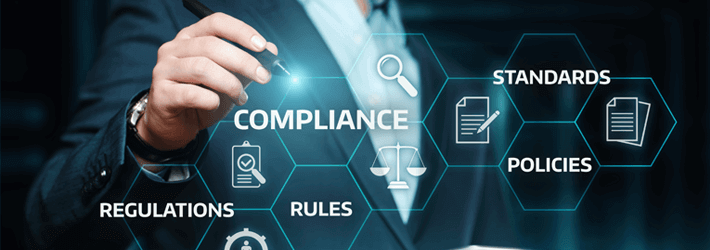Last Updated on December 24, 2024 by Satyendra

Data classification is often seen as the starting point in many data security strategies, especially if your organization is growing and collecting large volumes of data. The reason for this is that you cannot accurately focus your cybersecurity strategy if you do not know where your most sensitive data resides. How can you ensure appropriate access controls and monitor user behavior effectively if you don’t know what the data actually contains and its associated risk?
Effective data classification policies help to define what your data is, its level of sensitivity, its association with compliance policies, and the required access controls needed for security. In this blog, we will explain what a good data classification policy is composed of and how you can build and implement one in your organization.
Let’s get started.
What is a Data Classification Policy?
In general terms, data classification policies are made up of a classification framework and a list of responsibilities for identifying sensitive data. The classification framework will usually involve a description of the various levels of classification used. Data classification policies should not attempt to provide restrictions for how data is handled, as this is a separate task that requires its own detailed policy document.
What Makes a Successful Data Classification Policy?
Each organization will have its own unique data classification policy, there is no one size fits all. However, there are some commonalities that successful policies share. Here are a few of the indicators of a successful data classification policy:
- You have to get your classification criteria nailed down. They should be broad enough that they encompass all data in some way, but specific enough to avoid ambiguity.
- A successful data classification policy will be written in the language of the business, will be clear and concise, and will resonate with employees.
- The best policies are the simplest ones. Try and keep it to just a few pages and no more than four classification levels.
- It should make employees aware of the person within the organization that is responsible for resolving any potential problems with classification policy that might arise.
- A good data classification policy should make regular reviews a priority and a necessity. Reviews should take place at least quarterly so as to keep abreast of any new compliance regulations or changes within the company.
Why Do Data Classification Policies Fail?
Unfortunately, many data classification policies fail before they even get off the ground. If you don’t want this happening to you then you should avoid the following pitfalls:
- Using overly complicated language, jargon, abbreviations, and other complexities that make it difficult for employees to get to grips with the meaning of the document.
- Developing policies and practices that do not fit in with the organization’s workflows and are not backed up by employee training for implementation.
- If fails to explain to employees, the importance of data classification and the reason why the policy has to be implemented.
- The policy is written and then left for a long period of time without regular reviews to update and improve.
If you avoid these pitfalls, then you are far more likely to create a successful data classification policy.
How to Build a Successful Data Classification Policy – Step by Step
There are five key steps you need to take to develop and implement a successful data classification policy. These steps are outlined below:
Step 1 – Getting help and establishing why. You will need to ensure that you have the approval and help of key stakeholders within the business, in particular the board. These people need to understand the importance of data classification and the reasons why a policy is necessary. With the help of these stakeholders, you can develop a pitch as to why a data classification policy is required and the goals your policy is hoping to achieve.
Step 2 – Defining the scope of the policy. You need to define the amount of information within your organization that will fall under the policy, what forms that data takes and where that data is stored.
Step 3 – Define responsibilities. You now need to determine which people within your organization will be responsible for maintaining your classification policy and the roles each person and the department will play.
Step 4 – Define your classification levels. We have spoken briefly about classification levels in an earlier blog, but we will go through them again briefly. Separate your content into four different levels based on their risk. Restricted data poses the greatest threat, followed by high risk, medium risk, and low risk. Ensure your definition for these levels, whichever language you end up using, is concise and unambiguous.
Step 5 – Schedule regular reviews. The data classification policy needs to be regularly reviewed and refined to ensure it stays current with compliance regulations and your business structure. Define the process and timeline for these reviews in the policy.
What to Do After Your Data Classification Policy is Completed?
Once you have a data classification policy in place, you will need to implement it. This will usually involve categorizing, scoring, and tagging data based on their risk and classification levels. Most organizations find that they need to deploy a third-party data classification software to help automate classification at the point of creation and modification.
If you would like to see how Lepide Data Security Platform can help you implement your data classification policy, I would certainly recommend that you schedule a demo with one of our engineers today.


 Group Policy Examples and Settings for Effective Administration
Group Policy Examples and Settings for Effective Administration 15 Most Common Types of Cyber Attack and How to Prevent Them
15 Most Common Types of Cyber Attack and How to Prevent Them Why AD Account Keeps Getting Locked Out Frequently and How to Resolve It
Why AD Account Keeps Getting Locked Out Frequently and How to Resolve It
